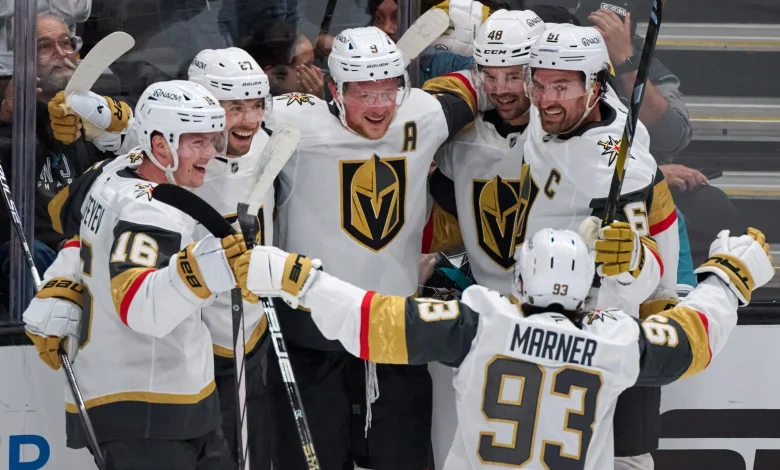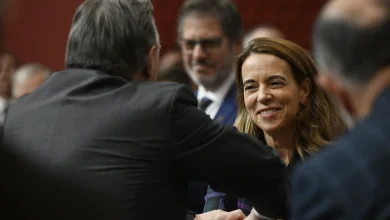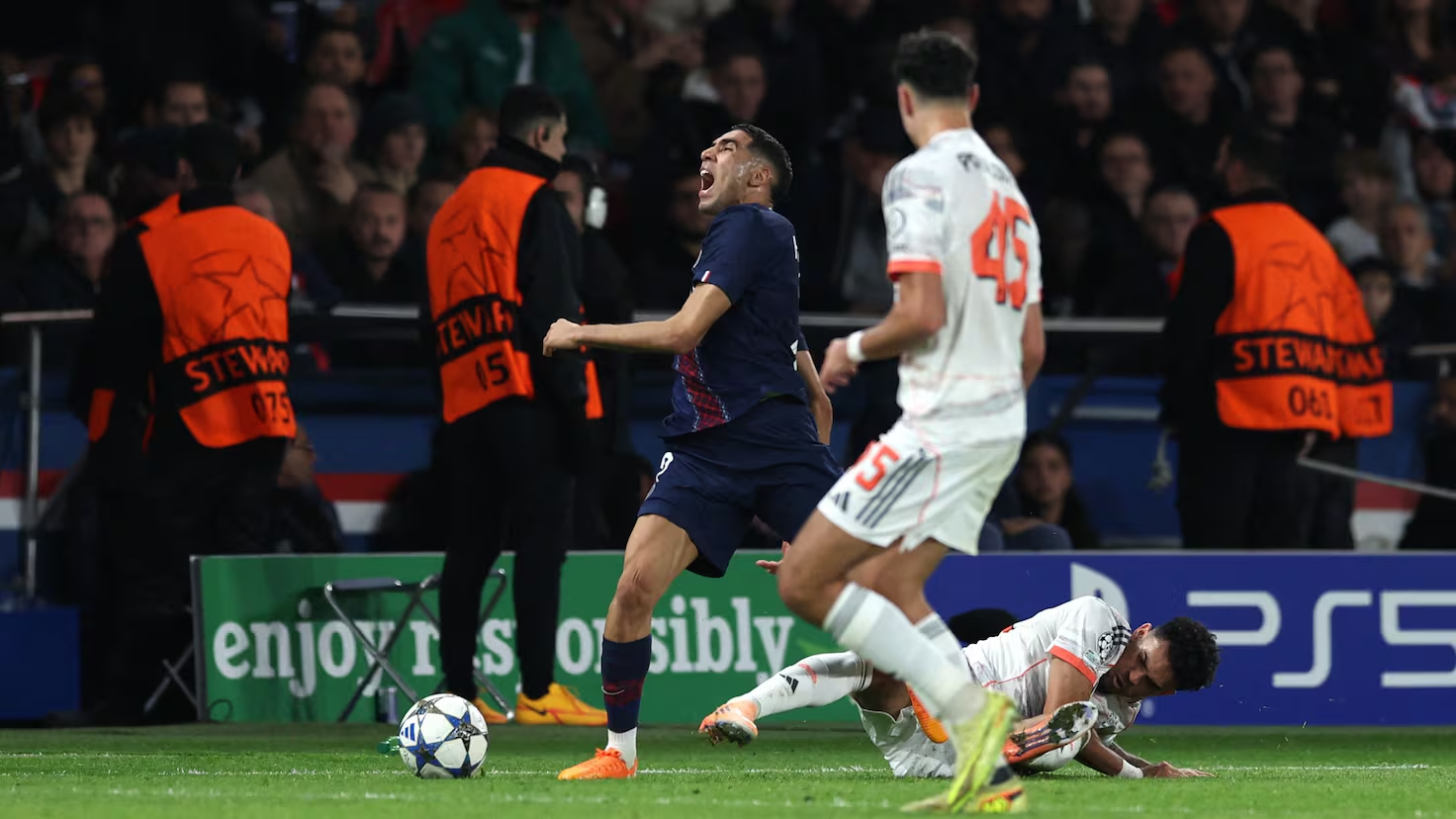Trouble in the Desert: Unpacking the Golden Knights’ Recent Slide

The Vegas Golden Knights are navigating unfamiliar and turbulent waters. For a franchise accustomed to setting the standard, their current position — fifth in the Pacific and outside the playoff picture as of mid-November — is a stark deviation from the norm. A recently concluded 1-3-2 homestand, capped by a four-game losing streak, has exposed significant cracks in the armor.
This isn’t a simple slump; it’s a confluence of critical issues. The team is being battered by a “terrible domino effect” of injuries to core players, a resulting evaporation of depth scoring, and a goaltending situation that can only be described as a crisis.
The Domino Effect: When Stars Go Dark
You cannot lose players of this caliber and expect to be the same team. But it’s who is out that tells the real story.
The absence of captain Mark Stone (lower-body) for seven games (and counting) has turned the power play “ice cold.” A unit that is now 3-for-34 since late October is feeling the loss of its primary orchestrator. With a best-case return not estimated until mid-December, the ripple effect is profound.
Related – Projected Lineups for Golden Knights vs Blues – 11/15/25
Compounding this is the “week-to-week” status of center William Karlsson (lower-body), a recurring issue that cost him 29 games last season. And then there is the devastating, season-ending loss of cornerstone defenseman Alex Pietrangelo.
William Karlsson, Vegas Golden Knights (Amy Irvin / The Hockey Writers)
This cascade of injuries has forced management to “reach deep into the bag,” pressing American Hockey League (AHL) call-ups into service far above their expected pay grade. Henderson’s leading scorer, Braeden Bowman, had a strong debut, but the fact that he was immediately thrust onto the first power play unit underscores the desperation.
Searching for Support: The Depth Dilemma
The injuries have illuminated a glaring structural issue: the Golden Knights are “way too top-heavy.” While stars are paid to be stars, a team cannot survive when the bottom nine forwards — or “bottom seven and a half,” as some suggest — are providing negligible production.
The scoring rut is team-wide. Veterans like Brandon Saad, Keegan Kolesar, and Colton Sissons have been quiet. Reilly Smith, a key secondary source, has found the back of the net just once since the season’s second game.
The problem extends to the blue line. The entire defense corps has contributed a meager two goals all season, both from Kaedan Korczak. This collective drought from the supporting cast puts unsustainable pressure on the remaining top-end talent.
Misplaced Scrutiny: The $12 Million Marner Question
When a team with a top-heavy payroll struggles, the first target is inevitably the highest-paid player. The $12 million contract for Mitch Marner is an easy scapegoat for fans arguing the money should have been spread around.
This, however, is a fundamental misdiagnosis of the problem.
Mitch Marner, Vegas Golden Knights (Sergei Belski-Imagn Images)
Marner is, by all accounts, delivering. With 17 points (four goals, 13 assists) in his first month, he is on pace to set franchise records for assists and points. He is fulfilling his role as an elite facilitator. The issue isn’t Marner; it’s the lack of production from the very depth pieces his contract was weighed against. The problem isn’t the investment in the superstar; it’s the failure of the supplementary components to perform to their own historical and contractual standards.
The Last Line of Defense: A Problem in the Crease
Perhaps the most “obvious positional problem” is the one between the pipes. Starting netminder Adin Hill has missed six games and is out for the foreseeable future, but the issues run deeper than his absence.
The goaltending, as a whole, has been subpar.
Related – Golden Knights News & Rumors: Goaltending, Recent Stretch & More
As a team, the Golden Knights’ .886 save percentage ranked 24th in the league heading into this slide. This is not a failure of the defensive system; the Golden Knights allow the second-fewest team shots in the NHL and are 14th in goals allowed per game. The system is limiting chances, but the goalies are not making the requisite saves.
Coach Bruce Cassidy’s patience appears to be wearing thin. His public comment on Akira Schmid following the overtime loss to the New York Islanders — a short-handed 2-on-1 goal that zipped past him — was a blunt two-word assessment: “You save.” It’s a direct, pointed challenge in an uneasy goaltending situation that has no immediate, clear solution.
Running on Fumes: Coaching, Minutes, and a Broken System
These three core problems — injuries, depth failure, and goaltending — create a feedback loop that is straining the entire operation.
In response to the scoring drought, coach Cassidy has been shortening his bench, rolling just three lines for significant stretches. This is a stopgap measure, not a strategy. The downstream consequence is a dangerous imbalance in ice time.
Jack Eichel, Vegas Golden Knights (Bob Frid-Imagn Images)
In a recent game, Shea Theodore played 24 minutes, while Jack Eichel and Mitch Marner both logged over 21. Meanwhile, depth pieces like Cole Reinhardt and Alex Holtz barely saw the ice. This approach may steal a point in the short term, but taxing your elite players with heavy, mid-season minutes is a recipe for burnout and further injury down the line.
The team is stuck. They are blowing hard-earned leads, a trait Reilly Smith noted is “happening to us a lot lately.” They are failing to capitalize on crucial power plays. They are in a position of adversity they are simply “not accustomed to.”
This is the most significant test of the Golden Knights’ organizational depth and resilience in recent memory. The engine is sputtering, and the secondary components are failing. Finding a fix will require more than just getting healthy; it will require the underperforming veterans to find their game and the goaltenders to steal one — or, at the very least, save the ones they’re supposed to.
AI tools were used to support the creation or distribution of this content, however, it has been carefully edited and fact-checked by a member of The Hockey Writers editorial team. For more information on our use of AI, please visit our Editorial Standards page.





